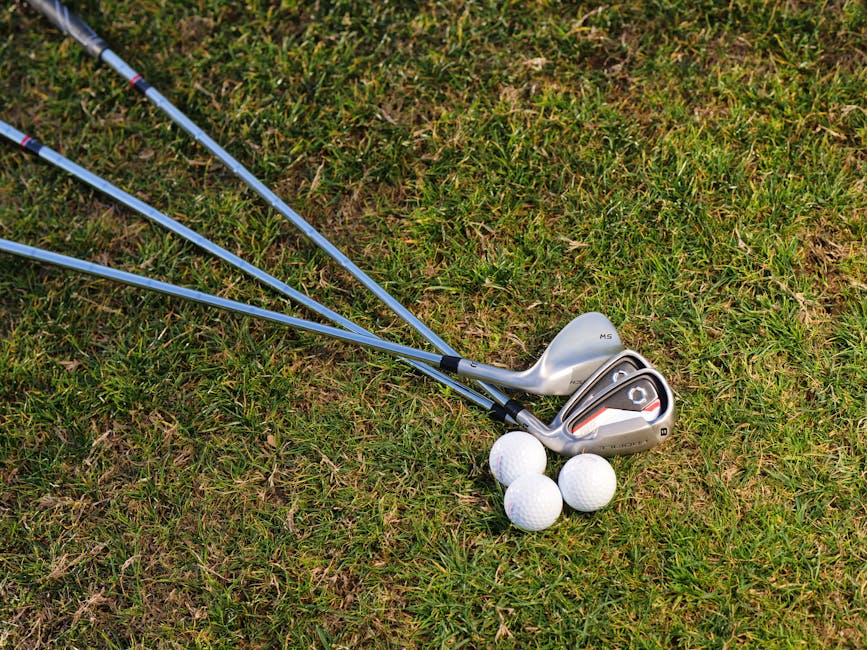From Rookie to Pro: Holding a Golf Club Made Easy
Golf, a sport rich with tradition and history, demands not only physical skill but also precision and patience. One fundamental aspect that can make or break your game is how you hold the golf club. Proper grip is essential for controlling the club’s face orientation and maintaining the trajectory of the ball. This comprehensive guide is designed to take you from a novice golfer to a skilled player by mastering the art of gripping a golf club.
Understanding the Importance of a Proper Golf Grip
A correct grip affects every swing you make. It determines the power transfer from your body to the club, influences the accuracy of your shots, and prevents common injuries associated with poor grip techniques. Before diving into the methodologies, it’s crucial to comprehend that a good grip can exponentially enhance your gameplay, leading to more enjoyable and successful golfing experiences.
Exploring Different Types of Golf Grips
There are primarily three types of grips in golf: the overlap, the interlock, and the ten-finger grip. Each has its own advantages and is preferable depending on your comfort, hand size, and skill level.
The Overlapping Grip
Also known as the Vardon Grip, this is the most common grip among professional golfers. It involves placing the pinkie finger of your trailing hand between the index and middle finger of your leading hand. This grip is excellent for those with larger hands and fosters a good connection between both hands.
The Interlocking Grip
Suitable for players with smaller hands or less grip strength, the interlocking grip offers extra stability as it locks both hands together. This is achieved by intertwining the pinkie finger of the trailing hand with the index finger of the leading hand.
The Ten-Finger (Baseball) Grip
This grip aligns more naturally with those who have a background in bat sports like baseball. All fingers are on the club with no overlap or interlock, providing maximum comfort and ease, especially for beginners, younger players, or those with joint pain.
Step-by-Step Guide to Gripping a Golf Club
Now, let’s break down how to effectively apply these grips with a step-by-step approach.
1. Hand Placement
Your lead hand (left hand for right-handed players and right hand for left-handed players) should hold the club first. Place it at the end of the club handle, ensuring the handle is primarily in the fingers rather than the palm.
2. Applying the Grip
Once your lead hand is in place, choose and apply the type of grip that suits you most: overlap, interlock, or ten-finger. Ensure the grip feels natural and comfortable.
3. Grip Tightness
Your grip on the club should be firm yet relaxed. Imagine holding a bird; you wouldn’t want to squeeze too tightly and harm it, nor too loosely letting it fly away. This analogy is often used to teach the ideal strength of a golf grip.
Common Questions Answered
How often should I practice my grip?
Regular practice is key. Even without hitting balls, practicing your grip at home can lead to improvement. Try gripping a golf club for a few minutes each day to build muscle memory.
Does grip change based on the club?
While the basic grip remains the same, minor adjustments may be necessary depending on the club used. For instance, you might grip slightly stronger with woods compared to irons due to different club head weights and swing speeds.
What are the signs of an incorrect grip?
Common indicators include consistently slicing or hooking the ball, feeling the club twist in your hands during a swing, or developing blisters in unusual places on your hands.
Tips for Mastering Your Grip
- Seek professional advice: A few sessions with a golf instructor can provide personalized feedback and adjustments.
- Use grip training aids: There are various products available that can help you maintain the correct grip alignment and pressure.
- Watch and learn: Observing how professional players hold their clubs and their swing technique can offer valuable insights.
- Be patient: Like any skill in golf, developing the perfect grip takes time and practice. Be patient with your progress.
Wrapping Up
Mastering how to hold a golf club is a crucial step that paves the way for future successes on the golf course. By understanding different grips and learning how to apply them correctly, you can improve both your swing mechanics and overall game performance. Remember, a winning grip is one that feels right for you and enhances your comfort and control over the golf club. Keep practicing, and you’ll transition from a rookie to a pro in no time!
